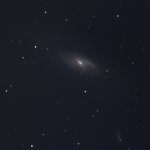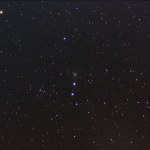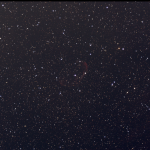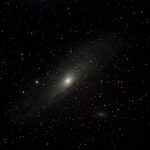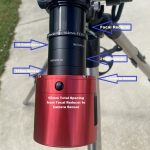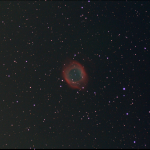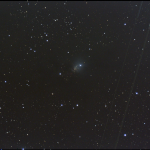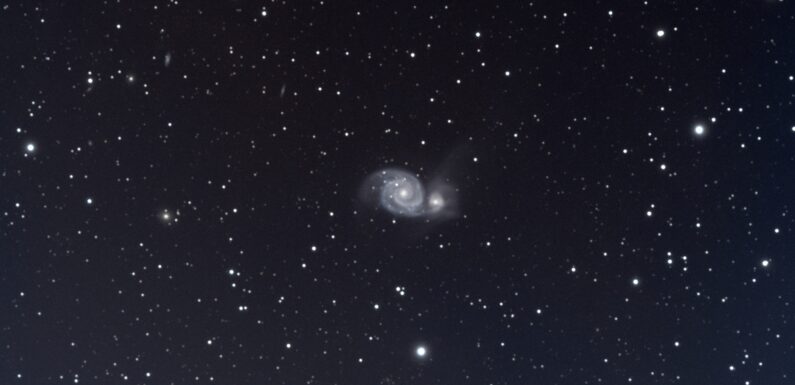
It is galaxy season! It was a nice night for observing. A crisp clear sky and temperatures in the mid-to-low 50s F. Not a lot of humidity in the air, so seeing was nice and dew was at a minimum. Last nights target was Messier 51 (M51), also known as the Whirlpool Galaxy, in the constellation of Canes Venatici. The Whirlpool Galaxy is about 23.5 million light years from us. M51 is interacting with NGC 5195.
| Primary (Imaging) | Secondary (Guiding) |
|---|---|
| Scope: SVBONY SV503 102ED Reducer/Flattener: SVBONY SV193 0.8 FR/FF Filter: None Camera: ZWO ASI294 MC Pro, Cooled to -10 C Focuser: ZWO EAF Mount: Sky Watcher EQ6-R Pro |
Scope: SVBONY SV106 60mm Guide Scope Camera: Orion Star Shooter Autoguider (OSSAG) |
| Telescope Control, Image Acquisition, and Image Processing Software | |
|
Equipment Control and Imaging Software: KStars/Ekos connecting to INDI Server on a Raspberry Pi Stacking/Processing Software: Siril astronomical image processing tool and Siril’s Interactive Companion (Sirilic) |
|
Earlier in the day I updated INDI to the latest release, v2.0.7. I also updated the INDI 3rd-Party drivers and libraries to v2.0.7. This release has been out for a couple weeks now, but I did not want to upgrade prior to the Solar Eclipse in case there were any issues with the release. The upgrade went without issue and I did not have any issues during my session. Usually there are a few kinks that need to be worked out with these upgrades, but with this one everything seemed to work just as expected.
I connected up the scope around 4:30 PM and cooled the camera to -10 C. After verifying there was no frost on the camera lens, I shot an hour of dark calibration frames, 12 x 300 seconds. When the darks were finished I uncovered the scope and waited for the Sun to set. Once it was dark enough, a little after 8:30, I checked focus and polar aligned. Ekos Auto Focus set the focus steps to 10189. Plate solving calculated the focal length to 569.5 mm, F/5.6.
I captured 3 hours of light from Messier 51, 36 x 300 second exposures at 121 gain, 30 offset, and bin 2×2. Just after midnight I covered up the scope. In the morning I shot some flat and bias frames to use for calibration. I stacked the 36 light frames, 12 dark frames, 100 flat frames, and 100 bias frames using Sirilic. Then cropped, processed, and stretched the stacked image in Siril.
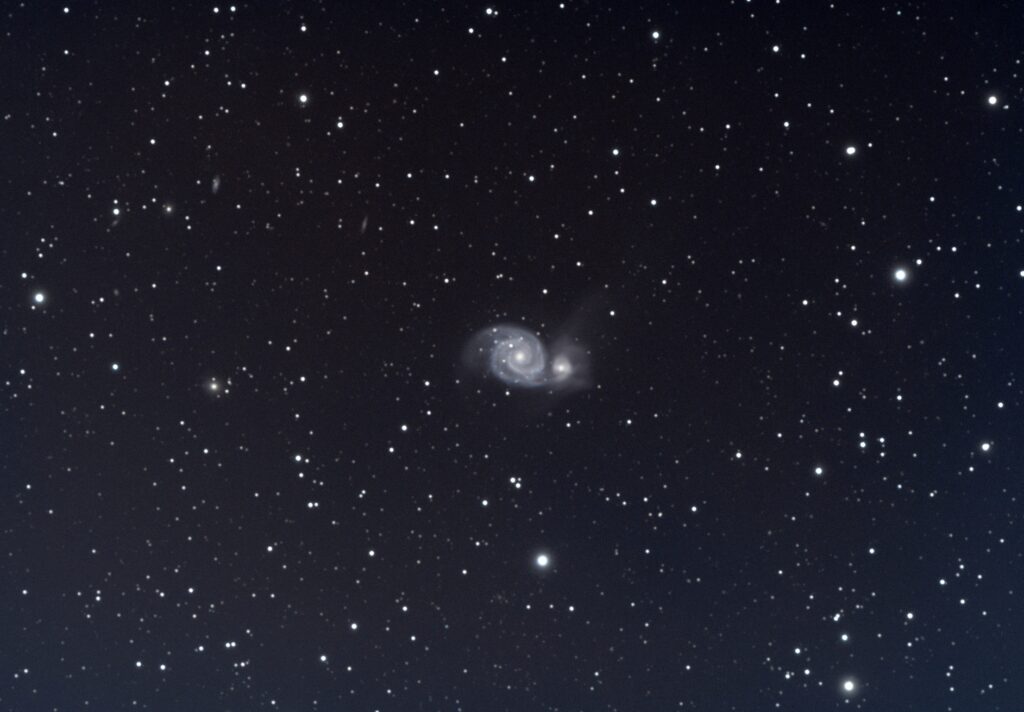
A nice capture of the Whirlpool Galaxy. There are also several other nice faint fuzzies in the field of view. Not sure what exactly I did right but the flat frames I took really worked nicely removing the vignetting and the dust motes. I might be able to bring out a bit more detail with a bit more tinkering in Siril but I like the way this turned out.
I should of re-focused between 1 hour runs, as I think my focus started getting a little soft as the temperature dropped a bit. I am going to add that to my future workflow and set up my capture sequences to run the Ekos Auto Focus either after every hour of captures or after a change in temperature. Going to mess around with it a bit, but I definitely need to check focus more often than just at the beginning of the night.
While I was gathering light from M51 I was hanging out on the Night Skies Network. I didn’t broadcast, just watched other’s views and chatted a bit. Got a few great ideas for some interesting future targets.
My SeeStar S50 should be here this week. Excited to see what I can see with it. Looking forward to the next clear sky.


